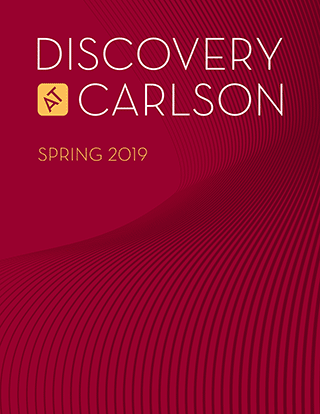
Associate Professor Colleen Flaherty Manchester Investigates Gender Pay Dynamics
Monday, March 4, 2019
At a conference in 2014, Professor Colleen Flaherty Manchester met a successful businesswoman who had recently found herself receiving higher pay increases than her peers, other forms of increased compensation, and a bevy of recruiting calls from other executives.
While not an unwelcome turn of events, the woman wondered what kind of “list” her name was on and if companies’ diversity goals were somehow working in her favor.
That conversation sparked the same curiosity in Manchester, too, because the situation seemed to be the opposite of what previous research has established – a persistent gender pay gap in which women around the globe earn 80 percent or less than men.
Salaries fueled by strategic values
It turns out that for a small number of women in the workplace, there is an exception to the rule.
“We had collected data for a different purpose but were continuing to look at it,” Manchester says. “When I had the interaction with the woman who wondered if she was on a list, things started to click in our minds. We were finding this premium for high-potential women but didn’t understand it.”
Manchester and her co-authors found a key component to the flip in the pay gap: an organization’s diversity goals. While women are less represented in higher ranks in companies, simple supply and demand is not enough to explain the gender gap reverse, Manchester says. Women on the receiving end of the reverse pay gap demonstrate high potential but, most importantly, work in an organization that values diversity.
“A key idea in the paper is that individuals vary in their diversity value and high-potential women have greater diversity value than high-potential men,” Manchester says. “But the organization has to value diversity to begin with.”
The key takeaway in the research is that an organization’s strategic goals can have a very real effect on the people who work for it.
“It turns out the undervaluation of gender may be flipped in some organizations for some women,” Manchester says.
More money on top, less money overall
Research included studies of a Fortune 500 company and of top executives, gathering data about gender, pay, potential and performance, as well as the type of industry. Manchester and her co-authors found the pay premium for high-potential women in customer-facing, consumer-driven organizations, likely reflecting those organizations’ diversity goals due to a diverse consumer base and desire to connect with customers.
While it’s a boon to the women who fit the profile to benefit from this gap, it’s not a solution to the overall pay gap that exists in the workplace.
“One story we don’t want to get lost here is the persistence of the gender pay gap for the vast majority of employees,” Manchester says. “It’s still a very robust discrepancy against women for a large part of the workforce. Our research shows that for this group, organizations’ explicit commitment to diversity goals can permeate through the organization and effect pay decisions for workers.”
In fact, Manchester says, the pay premium might have some unintended consequences if others in the organization perceive it to be unfair.
“It’s going to be important for organizations to communicate whether diversity value is a legitimate factor to weigh when making pay decisions,” she says.
